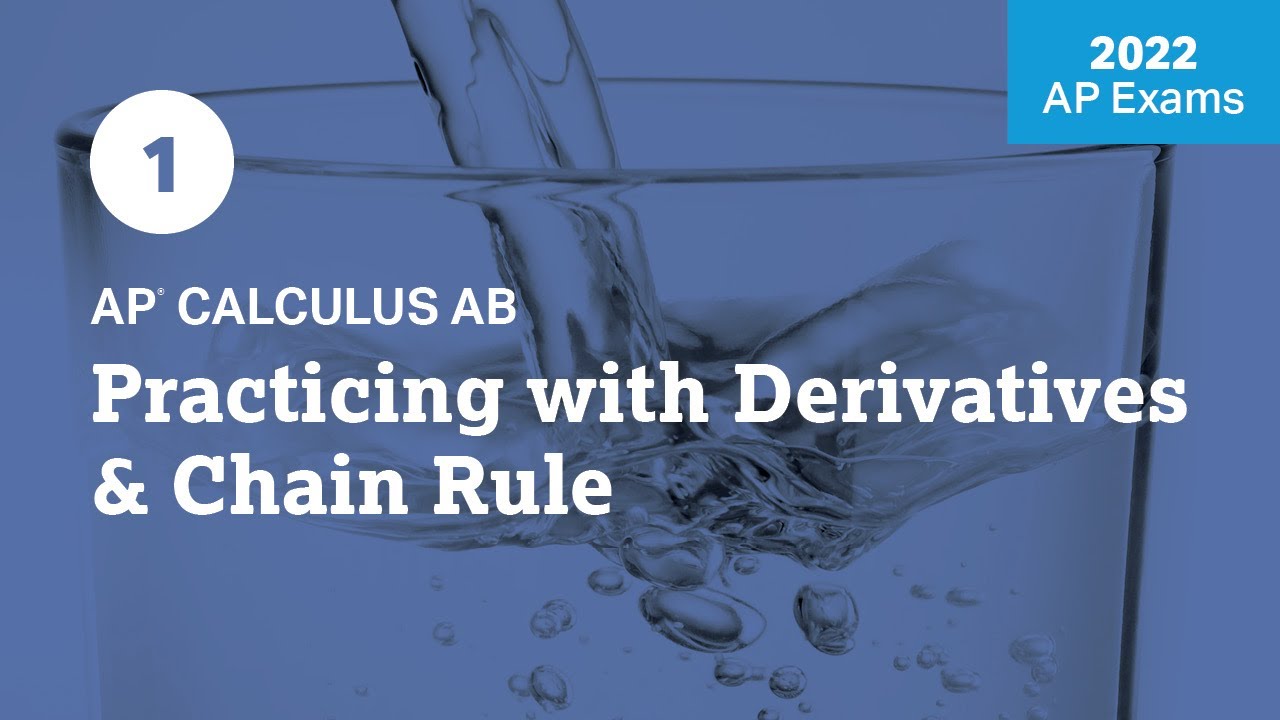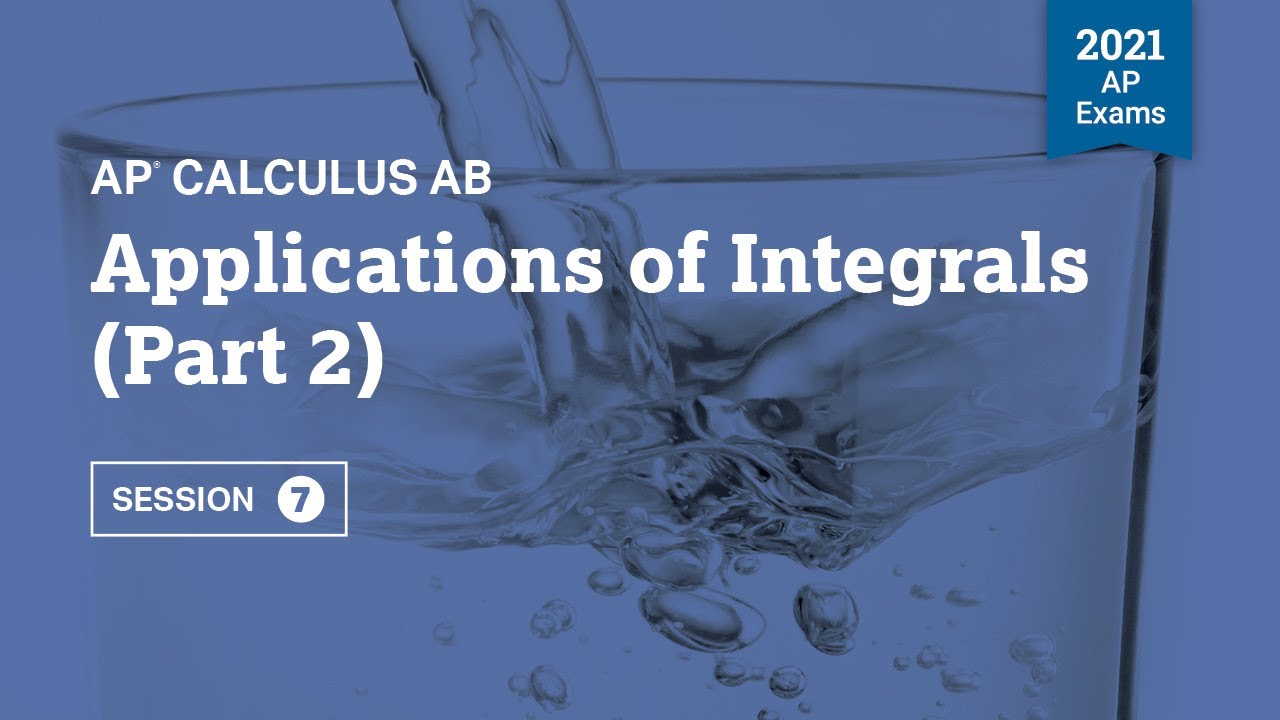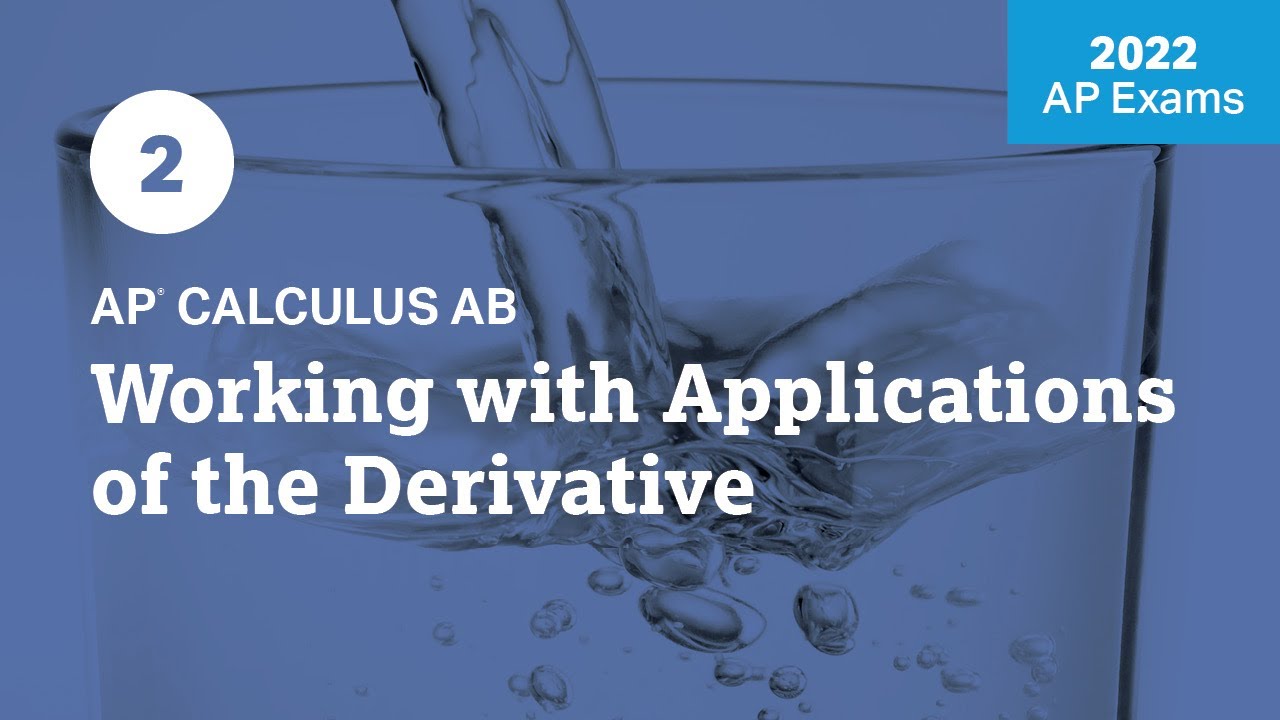2021 Live Review 1 | AP Calculus AB | Understanding Derivatives & Chain Rule
TLDRThe video script features an engaging live review session focused on AP Calculus, specifically derivatives. The educators, Virg and Mark, introduce various fundamental concepts such as the power rule, chain rule, and different notations of derivatives. They emphasize the importance of understanding these concepts for success in calculus and the AP exam. The session includes a non-calculator warm-up problem, where they derive the third derivative of a function and evaluate it at a specific point. The instructors also discuss the use of a document camera to solve problems and the availability of practice problems for students to follow along. Throughout the session, they encourage students to practice actively, take notes, and utilize resources like a 'yellow sheet' for important formulas. The session concludes with a reminder of the importance of practice and a teaser for the next session, which will cover applications of derivatives.
Takeaways
- 📚 Start with Derivatives: The session emphasizes the importance of understanding derivatives, including the rules and different notations like dy/dx or f'(x).
- 🔢 Practice is Key: Encourages students to practice problems during the live session and to use the provided resources to solidify their understanding.
- ⛓ Chain Rule: A significant focus is placed on the chain rule and its application in calculus problems.
- 📈 Derivative Applications: The session mentions that upcoming sessions will cover applications of derivatives, such as related rates and motion problems.
- 📱 QR Code for Practice: Students are guided to use a QR code to access and download practice problems for further study.
- 📉 Non-Calculator Practice: The warm-up and most of the session is designed to be non-calculator, focusing on building a strong foundation in calculus concepts.
- 📐 Power Rule and Product Rule: The power rule and product rule are highlighted as fundamental calculus rules that students need to master.
- 🔁 Pattern Recognition: The instructors discuss the cyclical nature of derivatives of trigonometric functions and how to use this pattern to solve problems.
- ⏱️ Time Management: The instructors remind students about the timing of different AP exams and the importance of practicing both multiple-choice and free-response questions.
- 📋 Note-Taking: Students are advised to take notes and create a list of formulas for reference during their study.
- 🤓 Multiple Paths to a Solution: The session highlights that there are often multiple correct methods to approach a calculus problem, encouraging creative problem-solving.
Q & A
What is the main topic of discussion in the provided transcript?
-The main topic of discussion is the AP Daily Live Review session focused on derivatives, including various rules and practices for calculus, specifically for the AP exam preparation.
Why did the speakers decide to start with derivatives instead of limits?
-The speakers chose to start with derivatives because they wanted everyone to get great practice on derivatives, which are fundamental to doing well in calculus and on the AP exam.
What is the significance of the 'chain rule' in calculus as discussed in the transcript?
-The chain rule is significant because it is used for differentiating composite functions, which is a common operation in calculus. It is an essential skill for students to master for the AP calculus exam.
What is the purpose of the practice problems provided during the session?
-The practice problems are meant to solidify the students' understanding of derivatives and allow them to apply the concepts learned during the session. They are also intended to prepare students for the types of questions they may encounter on the AP exam.
How do the speakers suggest students engage with the material during the session?
-The speakers suggest that students should actively participate by pausing the video to work through problems on their own, taking notes, and using the provided QR code to download practice problems for further study.
What is the strategy the speakers use for solving the problem involving the third derivative of y with respect to x?
-The speakers use the power rule for differentiation, applying it step by step to find the first, second, and third derivatives. They then evaluate the third derivative at x equals two to find the specific value requested in the problem.
What is the importance of the 'product rule' in the context of the session?
-The product rule is important for differentiating functions that are products of two or more functions. It is a fundamental rule that students need to know to solve problems involving products of functions, such as those found in the AP calculus exam.
Why is it recommended for students to create a list of formulas for themselves?
-Creating a list of formulas helps students to have a quick reference guide for the various rules and formulas they need to remember for calculus problems. It is a useful study tool for reviewing and reinforcing their knowledge.
What is the key takeaway from the joke about sitting between identical twins during the AP calculus exam?
-The joke illustrates the concept of differentiation in a light-hearted way, emphasizing the importance of being able to differentiate between similar elements, which is a key skill in calculus.
How do the speakers plan to support students in the upcoming weeks?
-The speakers plan to support students by providing a series of live review sessions, offering practice problems, tips and tricks, and covering a range of topics including applications of derivatives, which will help students prepare for their AP calculus exam.
What is the method used by the speakers to find the slope of the tangent line to the graph of a function?
-The speakers find the slope of the tangent line by first taking the derivative of the function, which represents the instantaneous rate of change, and then evaluating that derivative at the specific point of interest.
Outlines
😀 Introduction to AP Daily Live Review Session
The video script begins with a lively introduction to an AP Daily Live Review session focusing on calculus. The hosts, Virg and Mark, express their enthusiasm for starting with derivatives, a fundamental topic in calculus. They discuss the importance of understanding various rules, such as the derivative of sine being cosine, the chain rule, and different notations for derivatives. The session aims to be engaging yet not overly difficult, providing a solid foundation for students preparing for their AP exams. The hosts also encourage students to practice along with the session and to utilize the provided QR code to access practice problems. A non-calculator warm-up problem is presented, involving finding the third derivative of a given function and evaluating it at a specific point.
📚 Derivatives Practice and Memory Tips
The second paragraph continues the focus on derivatives, emphasizing practice and providing tips for remembering various rules and formulas. A problem involving a function h(x) is presented, and the process of finding its derivative and evaluating it at a specific point is demonstrated. The hosts discuss the importance of rewriting functions to better apply the power rule and engage with the problem. They also highlight the value of creating a personal list of formulas, which can be referred to during practice. The paragraph concludes with a reminder for students to take advantage of the two-week review period effectively.
🧮 Application of Product Rule and Exponential Functions
The third paragraph delves into applying the product rule and handling exponential functions. The hosts work through a problem involving the derivative of a product of e^x and a polynomial. They emphasize the importance of understanding the derivative of e^x and how to apply the product rule correctly. The discussion also touches on the creative nature of math, where multiple correct methods can lead to the same answer. The paragraph concludes with another problem involving different types of functions, highlighting the need to recognize the unique characteristics of each.
🔢 Chain Rule Application and Simplifying Complex Problems
The fourth paragraph introduces the chain rule, a fundamental concept in calculus for dealing with composite functions. The hosts work through a problem involving the square root of cosine(2x) and explain the process of differentiating nested functions. They stress the importance of breaking down complex problems into smaller, manageable parts. The paragraph also includes a reminder about the availability of the video series and encourages students to download and practice with the provided materials.
🤓 Quotient Rule and Trigonometric Derivatives
The fifth paragraph discusses the quotient rule and the derivatives of trigonometric functions. The hosts present a problem that could be solved using either the quotient rule or by rewriting the expression with a negative exponent. They demonstrate the process of differentiating a quotient and emphasize the importance of understanding when to use different rules. The paragraph also includes a problem involving the fourteenth derivative of a trigonometric function, showcasing how to recognize patterns in derivatives.
📈 Multi-Representation Problems and Tangent Line Calculations
The sixth paragraph presents a multi-representation problem involving a table of values, an analytically defined function, and a graph consisting of line segments. The hosts guide students through finding the slope of the tangent line to a function at a given point. They also discuss the importance of differentiating between various representations and the need to match the correct function when solving problems. The paragraph concludes with a reminder about the availability of solutions and the importance of practice.
🎓 AP Exam Preparation and Practice Tips
The seventh paragraph focuses on preparing for the AP exam, emphasizing the importance of understanding both multiple-choice and free-response questions. The hosts discuss the format of the exam, including the use of calculators and the structure of the questions. They provide tips for effective practice, such as working through problems during free time or when other classes have a substitute teacher. The paragraph also includes a joke related to differentiation, aiming to lighten the mood and engage the students.
📚 Inverse Functions and Final Thoughts on Practice
The eighth paragraph deals with inverse functions and the importance of understanding their derivatives. The hosts work through a problem involving the derivative of an inverse function, demonstrating how to use the properties of inverse functions to simplify calculations. They also discuss the structure of the AP exam, including the digital format and the types of problems students can expect. The paragraph concludes with a reminder about the importance of practice and the intention to cover more topics in future sessions.
🔁 Review of Topics and Preview of Future Sessions
The ninth paragraph wraps up the session with a review of the topics covered and a preview of what will be discussed in future sessions. The hosts emphasize the importance of mastering derivatives, as they are foundational to calculus and the AP exam. They also mention that applications of derivatives, such as related rates and motion problems, will be covered in upcoming sessions. The paragraph concludes with a thank you to the students and teachers for participating in the live review session.
📅 Schedule and Feedback for Live Review Sessions
The final paragraph provides information about the schedule for the live review sessions and how to provide feedback. The hosts mention that the sessions will continue with a focus on applications of derivatives in the next session. They also explain how to access the practice materials and the importance of giving timely feedback to help improve the sessions. The paragraph ends with a light-hearted comment about the hosts' previous live video and a farewell to the students until the next session.
Mindmap
Keywords
💡Derivatives
💡Chain Rule
💡Product Rule
💡Quotient Rule
💡Power Rule
💡Trigonometric Functions
💡Exponential Functions
💡Limits
💡AP Calculus Exam
💡Practice Problems
💡Inverse Functions
Highlights
The session begins with an introduction to AP Daily Live Review, focusing on derivatives as a fundamental topic for calculus.
The importance of understanding basic rules such as the derivative of sine being cosine is emphasized.
The session covers the chain rule and different notations for derivatives, like dy/dx and f'.
The instructors decide to start with derivatives over limits, aiming for a balance between fundamental and complex concepts.
Practice problems are provided for students to follow along, with options to download or scan a QR code.
The first problem involves finding the third derivative of a function and evaluating it at a specific point.
The use of the power rule and chain rule in derivatives is demonstrated through examples.
The instructors encourage students to practice along with the session to solidify their understanding of derivatives.
A strategy for remembering derivatives and mathematical rules is suggested, such as creating a list or 'yellow sheet' of formulas.
The session includes a variety of problems, from simple derivatives to more complex applications involving exponential and logarithmic functions.
The concept of the derivative as an instantaneous rate of change is linked to the slope of the tangent line.
The instructors provide a detailed walkthrough of a problem involving the derivative of a function composed of multiple nested functions.
The session touches on the use of trigonometric function derivatives and the application of the chain rule in trigonometric simplification.
The concept of derivatives of exponential functions and the natural logarithm function is explored.
The session concludes with a reminder of the importance of practice and the various formats of the AP Calculus exam.
The instructors provide a joke related to differentiation to lighten the mood and engage the students.
The session includes a multi-representation problem, combining algebraic, graphical, and numerical representations of functions.
The instructors discuss the AP exam structure, including the digital format and the importance of being familiar with both multiple-choice and free-response questions.
Transcripts
Browse More Related Video

2022 Live Review 1 | AP Calculus AB | Practicing with Derivatives & Chain Rule

8 | FRQ (No Calculator) | Practice Sessions | AP Calculus AB

1 | MCQ | Practice Sessions | AP Calculus AB

2021 Live Review 7 | AP Calculus AB | Application of Integrals (Part 2)

2022 Live Review 3 | AP Calculus AB | How to Find Limits & Continuity

2022 Live Review 2 | AP Calculus AB | Working with Applications of the Derivative
5.0 / 5 (0 votes)
Thanks for rating: